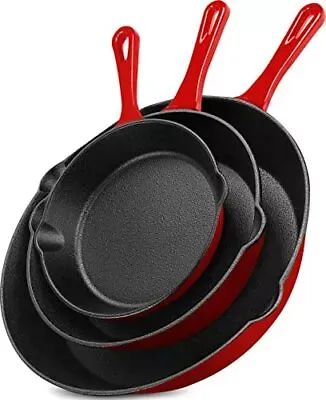
cleaning and reseasoning a cast iron skillet
Cleaning and Reseasoning a Cast Iron Skillet A Comprehensive Guide
Cast iron skillets are cherished kitchen tools celebrated for their heat retention, durability, and ability to develop a natural non-stick surface over time. However, maintaining a cast iron skillet requires careful cleaning and reseasoning to ensure its longevity and performance. In this article, we will explore the essential steps to properly clean and reseason your cast iron skillet.
Why Clean and Reseason?
Cleaning a cast iron skillet may seem daunting, especially compared to conventional cookware. However, proper care is crucial for preventing rust and maintaining the skillet's seasoning—a layer of polymerized fat that provides a natural non-stick surface. Regular cleaning and reseasoning will help keep your skillet in optimal condition for years of delicious cooking.
Cleaning Your Cast Iron Skillet
1. Immediate Cleaning After cooking, it’s best to clean your skillet while it’s still warm. This makes it easier to remove food particles. Avoid soaking the skillet in water, as prolonged exposure can lead to rust.
2. Scrape Off Residue Use a spatula or a non-metal scraper to gently remove food residue stuck to the skillet. Be careful not to scratch the seasoning.
3. Rinse and Scrub Rinse the skillet under warm water. If there are stubborn bits stuck on, use a stiff brush or a non-abrasive scouring pad. For heavy buildup, coarse salt can serve as an effective abrasive when combined with a bit of water or oil.
4. Avoid Soap Traditional soap is often discouraged because it can break down the seasoning. However, a small amount of mild soap can be used occasionally if desired, especially after cooking particularly greasy dishes.
5. Dry Thoroughly After rinsing, dry the skillet completely with a towel or by placing it on low heat on the stove. Cast iron is prone to rust, so fully drying it is essential.
cleaning and reseasoning a cast iron skillet

Reseasoning Your Cast Iron Skillet
Reseasoning is a vital process that helps to rejuvenate the skillet’s non-stick surface and protect it from moisture. Here’s how to do it
1. Select the Right Oil Choose an oil with a high smoke point for seasoning. Flaxseed oil, grapeseed oil, and vegetable oil are popular choices. Avoid oils that can turn rancid quickly, such as olive oil.
2. Apply a Thin Layer Once the skillet is completely dry, pour a small amount of oil onto the cooking surface. Use a paper towel or a lint-free cloth to spread the oil evenly across the entire surface, including the sides and handle. It’s important to use a thin layer, as excessive oil can create a sticky residue.
3. Preheat the Oven Preheat your oven to around 450°F (232°C). This high temperature will help the oil to polymerize, forming a hard, protective layer.
4. Bake the Skillet Place the skillet upside down in the oven on the middle rack. To catch any drips, place a sheet of aluminum foil or a baking tray on the rack below. Bake the skillet for about one hour.
5. Cool Down After an hour, turn off the oven and let the skillet cool inside. This gradual cooling process helps avoid cracking due to sudden temperature changes.
6. Repeat as Necessary For best results, repeat the seasoning process a couple of times to build a robust layer of seasoning.
Conclusion
Cleaning and reseasoning a cast iron skillet is not just maintenance; it’s an art that preserves the skillet's integrity and enhances your cooking experience. With proper care, your cast iron skillet will become a reliable companion in the kitchen, developing a natural non-stick surface that will make cooking and cleaning a breeze. Embrace the process, and you will enjoy the many benefits of cast iron cookware for generations to come. Happy cooking!
-
Black Cast Iron Pan- ZD Cookware|Non-Stick, Heat ResistantNewsAug.03,2025
-
Cast Iron Cookware Pancake Pan- ZD Cookware|Non-Stick, Even Heat, DurableNewsAug.02,2025
-
Cast Iron Cookware- Baixiang County Zhongda Machinery|Non-Stick, Heat RetentionNewsAug.02,2025
-
High Quality Kitchen Durable Black Round Cast Iron Cookware Pancake Crepe Pan With Wooden Handle|Non-Stick Surface&Heat RetentionNewsAug.02,2025
-
Authentic Traditional Chinese Wok for High-Performance CookingNewsAug.02,2025
-
Season Cast Iron Perfectly with GPT-4 Turbo TipsNewsAug.01,2025


